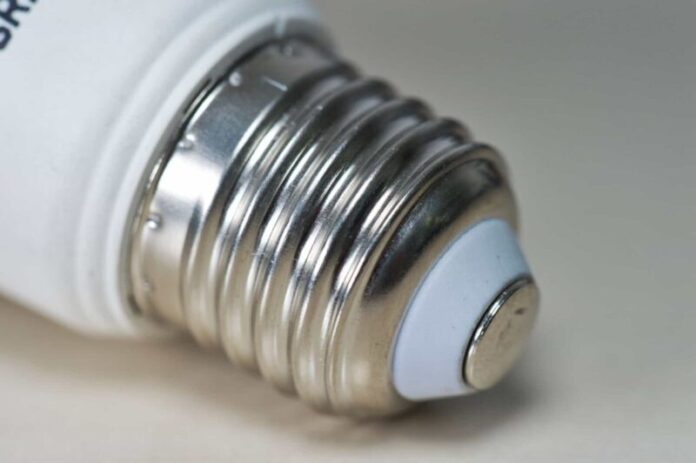An E26 socket is a type of electrical outlet that is used in North America. It has two vertical slots, which are separated by a horizontal bar.
The can i use an e27 bulb in an e26 socket is a question that has been asked many times. An E26 socket is used for incandescent light bulbs and the E27 socket is used for fluorescent light bulbs.
Have you ever gone into a dark room after a hard day at work, only to turn on the lamp and have the light bulb burn out very immediately? You’re not alone if this has happened to you. Replacing a light bulb may seem to be a straightforward task, but did you know that there are many different kinds of light bulb sockets? If you select the incorrect one, you risk shortening the lamp’s lifetime. You may even cause it to totally short out in extreme instances, requiring the lamp’s urgent disposal. In the United States, the E26 socket is used by the majority of homes. That isn’t always the case, however. As a result, it’s a good idea to learn more about what an E26 socket is and how to utilize it. At the same time, you may get acquainted with the many kinds of plugs available.
Sockets of Various Types
The number 26 relates to the diameter of the e26 socket, which is an Edison type socket. Because of Thomas Edison, who is primarily responsible for the power that we all enjoy today, it is frequently referred to as an Edison socket. This is the kind of light bulb socket used in the majority of lamps found in American homes. Naturally, not all light bulb sockets are the same size. In fact, those used for night lights or chandeliers are often considerably smaller in diameter than an E26 bulb. Nonetheless, the vast majority of full-size lights utilize light bulbs with the same socket size. It may be a little more perplexing in certain instances since there is also an E27 socket that appears nearly identical to the E26. To be honest, it’s almost difficult to discern the difference between them with the naked eye.
There Aren’t Always the Same Sockets
You may already be aware that small appliances in American homes have different voltage needs than those used in other nations, such as the United Kingdom. However, you may not be aware that two distinct little gadgets in your home may need different voltages. The reality is that you may have an older light in your living room that requires a completely different voltage than the modern one in your hallway. When choosing between E26 and E27 light bulb sockets, here is where things may become a little complicated. It’s worth noticing that they resemble each other nearly identically. The only difference is the amount of voltage that can pass through them. While it is true that you can put an E27 light bulb socket into a lamp intended to hold only an E26, this does not always imply it is a good idea. The various voltages associated with the two sockets may cause safety concerns, not the least of which is the risk of shocking oneself while turning on the light. If you happen to be one of those people who leaves the lamp plugged in and switched on while changing the light bulb, your chances of getting shocked increase dramatically. Furthermore, you risk damaging the light bulb or the lamp itself. It’s possible that using the incorrect light bulb socket may cause a fire. It’s a remote possibility, but it’s not out of the realm of possibilities. It’s much preferable to figure out which kind of light bulb socket is needed for the lamp in issue and then utilize that socket exclusively. Just because a plug fits into a light doesn’t imply you should use it.
Different Name for the Same Socket
It’s difficult to understand the distinctions between E26 and E27 light bulb sockets. Consider that the same E26 light bulb socket is also known by a number of other names, if that isn’t confusing enough. In reality, it is known as an intermediate socket at times and the standard socket at other times. As you can see, it’s not always simple to figure out which socket to use, particularly after they start changing the names on you. At the very least, you now know that a socket designated E26 is the same as a socket labeled standard or intermediate. It’s essential to remember that the E27 is often referred to as both standard and intermediate. As a result, you should always double-check the voltage requirements to ensure you’re using the correct one. Otherwise, you risk encountering the kinds of issues that have previously been addressed.
Now that you know more about the many kinds of sockets available, you should have a better idea of why it’s critical to pay attention to the voltage requirements for each lamp or light fixture you use. Unfortunately, many individuals have a habit of ignoring these specifications and putting anything into the socket that would fit. This is similar to deciding to use an appliance that has a very apparent short in it despite the fact that it is broken. Obviously, you want to ensure the safety of yourself and your loved ones. As a result, anytime you change a light bulb in any light fixture, you should always keep this in mind. Installing new bulbs will become much easier after you’ve gotten more acquainted with the voltage requirements in all of your home light fixtures.
The e26 socket size is a type of electrical socket that is used in North America. It has a 26-inch wire and a 6-inch plug.





